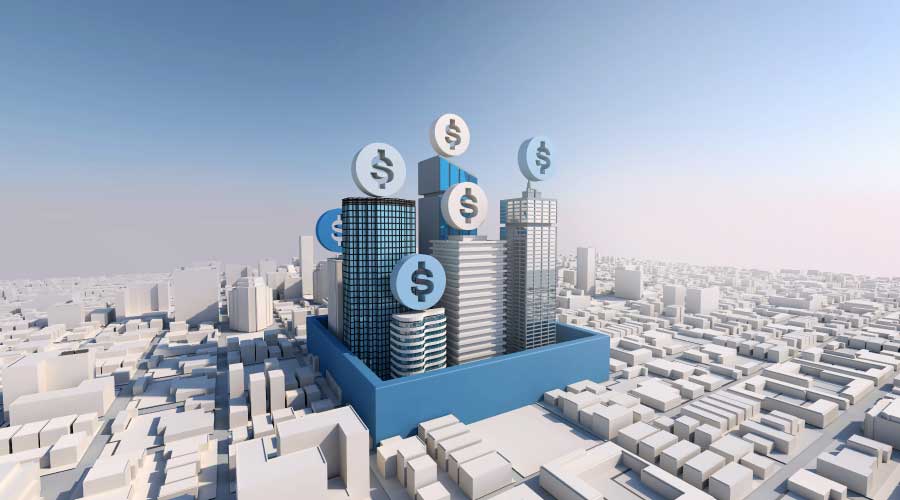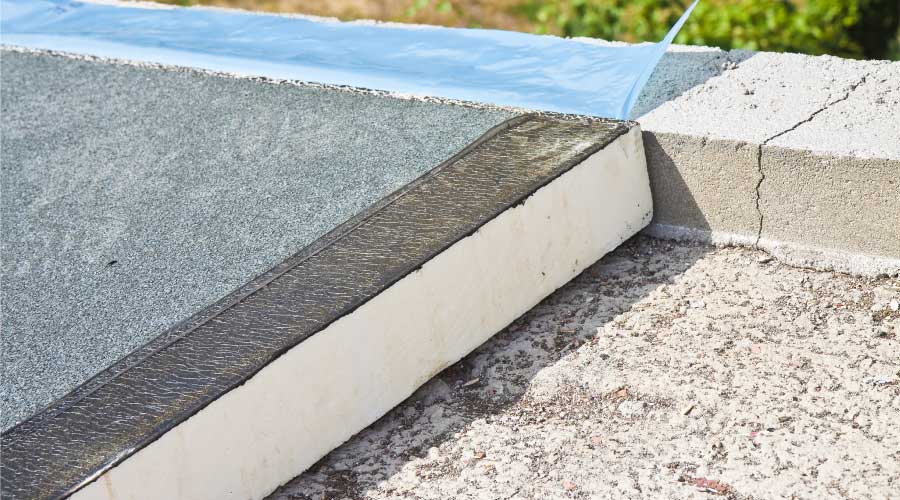How to Convert a Commercial Office Building to Net-Zero Energy
Net-zero energy is largely considered a new construction strategy. But recent technological advancements mean existing buildings can go net-zero too.
By Gregory R. Gilson, Contributing Writer
Commercial office buildings are responsible for a significant portion of global greenhouse gas emissions, making them a key target for reducing carbon footprints. Converting a commercial office building to net-zero energy consumption is a way to address this challenge. Net-zero energy buildings are designed to produce as much energy as they consume, using a combination of energy-efficient technologies, renewable energy sources, and smart building design. In this white paper, we explore how to convert a commercial office building to net-zero energy and why building owners should consider this option.
Commercial office buildings consume large amounts of energy for lighting, heating, cooling, and other purposes. According to the US Energy Information Administration (EIA), commercial buildings account for 18 percent of total energy consumption in the United States, and office buildings make up a significant portion of that figure. Furthermore, these buildings account for 39 percent of all carbon dioxide emissions in the US.
Converting a commercial office building to net-zero energy will reduce energy consumption and emissions significantly. According to the International Energy Agency (IEA), a net-zero energy building can reduce energy use by up to 90 percent compared to a typical commercial building.
Furthermore, a study by the Rocky Mountain Institute (RMI) found that net-zero energy buildings can be financially feasible, with a payback period of 5-10 years for most retrofit projects.
Strategies for Converting a Commercial Office Building to Net-Zero Energy
Converting a commercial office building to net-zero energy requires a combination of energy-efficient technologies, renewable energy sources, and smart building design. Some of the key strategies that building owners can use include:
Energy-efficient technologies
Energy-efficient technologies can reduce energy consumption and emissions by using less energy to achieve the same result. Some of the most effective technologies for commercial buildings include:
- LED lighting: LED lighting is up to 80 percent more efficient than traditional lighting, such as incandescent, florescent, and HID, and can last up to 25 times longer.
- HVAC systems: HVAC systems can account for up to 40 percent of a building’s energy consumption. Energy-efficient HVAC systems can reduce energy consumption by up to 30 percent with the use of energy recovery, VRF, or ground source systems, to name a few.
- Building automation systems: Building automation systems can optimize energy use by controlling lighting, HVAC, and other systems based on occupancy, temperature, and other factors.
Renewable energy sources
Renewable energy sources can generate clean energy on-site and reduce reliance on fossil fuels. Some of the most effective renewable energy sources for commercial buildings include:
- Solar power: Solar panels can generate electricity on-site and reduce reliance on the grid. According to the National Renewable Energy Laboratory (NREL), a typical commercial solar installation can provide a payback period of 5-10 years.
- Geothermal power: Geothermal systems can use the constant temperature of the ground to heat and cool buildings. According to the US Department of Energy (DOE), geothermal systems can reduce energy consumption by up to 70 percent.
- Other power sources: Small-scale wind, solar thermal, and solar hot water systems are all other commonly used renewable energy sources that can be considered.
Smart building design
Smart building design can optimize energy use by taking advantage of natural light, ventilation, and other factors. Some of the key design principles for net-zero energy buildings include:
- Passive solar design: Utilizes the orientation, shape, and materials of a building to maximize natural light and heat gain in the winter and minimize them in the summer.
- Natural ventilation: Utilizes natural airflow to cool and ventilate a building, reducing the need for mechanical cooling.
- Energy-efficient insulation: Increasing insulation reduces heat loss/gain, improving energy efficiency and occupant comfort.
Why Building Owners Should Consider Converting to Net-Zero Energy
There are several compelling reasons why building owners should consider converting their commercial office buildings to net-zero energy buildings:
- Cost Savings: Net-zero energy buildings can reduce energy costs by up to 80 percent compared to traditional buildings. By investing in energy-efficient technologies such as solar panels, LED lighting, and high-efficiency HVAC systems, building owners can significantly reduce their monthly energy bills and save money in the long run. Note: for many urban buildings, tools such as Renewable Energy Credits (RECs) or virtual metering (installing off-site solar power, wind power, etc. to offset the additional energy used at the building) will generally be required for the property to be considered net-zero energy.
- Environmental Benefits: Net-zero energy buildings help to reduce carbon emissions and mitigate climate change. By relying on renewable energy sources such as solar power, these buildings produce little to no greenhouse gas emissions, and therefore contribute less to climate change. Building owners can also demonstrate their commitment to sustainability and environmental responsibility.
- Improved Indoor Air Quality: Net-zero energy buildings are designed to maximize natural ventilation and daylighting, which can improve indoor air quality and promote occupant health and productivity. By incorporating green building strategies such as low-emitting materials and enhanced ventilation systems, building owners can create healthier and more comfortable indoor environments.
- Increased Property/Marketing Value: Net-zero energy buildings have been shown to command higher resale and marketing values than traditional buildings. By investing in energy-efficient technologies, building owners can differentiate their properties in the marketplace and attract tenants who value sustainability.
- Regulatory Compliance: In many jurisdictions, building codes and energy standards are becoming increasingly stringent, and net-zero energy buildings may be required in the future. By proactively converting to net-zero, building owners can ensure compliance with future regulations and avoid costly retrofits down the line.
Conclusion
Converting a commercial office building to a net-zero energy building is a sustainable and cost-effective solution for building owners.
The conversion process involves conducting building energy and envelope audits, implementing energy-efficient measures, installing renewable energy sources, and monitoring and managing energy consumption.
Converting to net-zero energy can provide a range of benefits for building owners, including cost savings, environmental benefits, improved indoor air quality, increased property value, and regulatory compliance.
Gregory R. Gilson, Director, Rimkus Energy and Resilience Practice, explores how commercial office buildings are converted to net-zero energy and why building owners should consider the option.
Related Topics:












